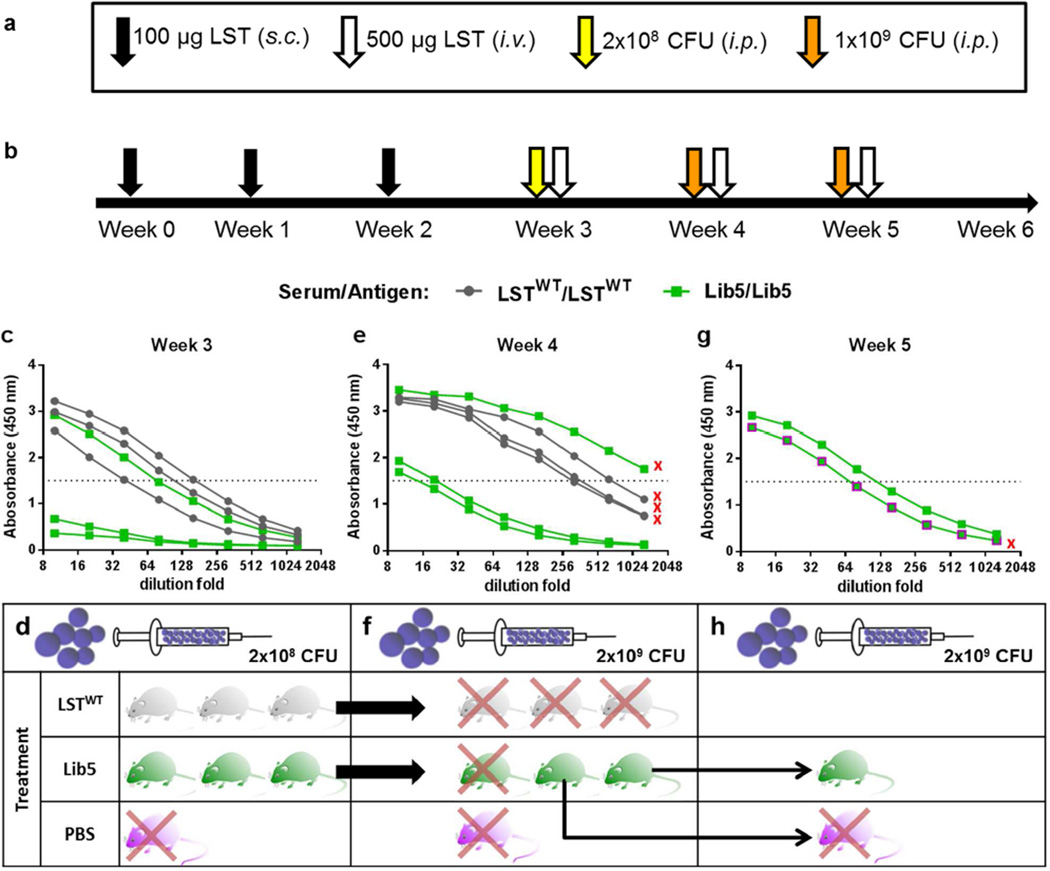Immunization, infection, and treatment key. Routes of administration: s.c.=subcutaneous; i.v.=intravenous; i.p.=intraperitoneal. Immunizations were adjuvant-free.
Timeline of the experimental design. Three animals per group were preimmunized with 3 weekly s.c. injections of LSTWT or Lib5 before undergoing a series of recurrent MRSA infections followed by repeated treatment with LSTWT or Lib5, respectively.
Week three immunogenicity of LSTWT (grey) and Lib5 (green) as measured by protein specific IgG ELISA of serum. By week three, LSTWT mice exhibited high antibody titers, whereas two out of three Lib5 immunized mice exhibited low level titers.
Week three efficacy in a systemic bacteremia model. Mice were treated i.v. with LSTWT (grey), Lib5 (green), or PBS (magenta). Both enzymes rescued 100% of their respective treatment groups, whereas the PBS sham treatment did not.
Week four immunogenicity. All mice demonstrated increased anti-LST titers relative to week three, but the two low titer Lib5 mice continued to exhibit a weaker immune response. Mice that were not rescued in subsequent efficacy studies are marked with a red “x”.
Week four efficacy. LSTWT failed to rescue any mice, and similarly neither the high titer Lib5 mouse nor the PBS mouse survived. The two lower titer Lib5 mice were both rescued by the Lib5 treatment.
Week five immunogenicity. The two surviving Lib5 mice again exhibited increased titers, but titers remained below that of the week four LSTWT group.
Week five efficacy. One of the surviving mice was treated with Lib5 and survived, whereas the second mouse was given a PBS sham treatment and did not.

